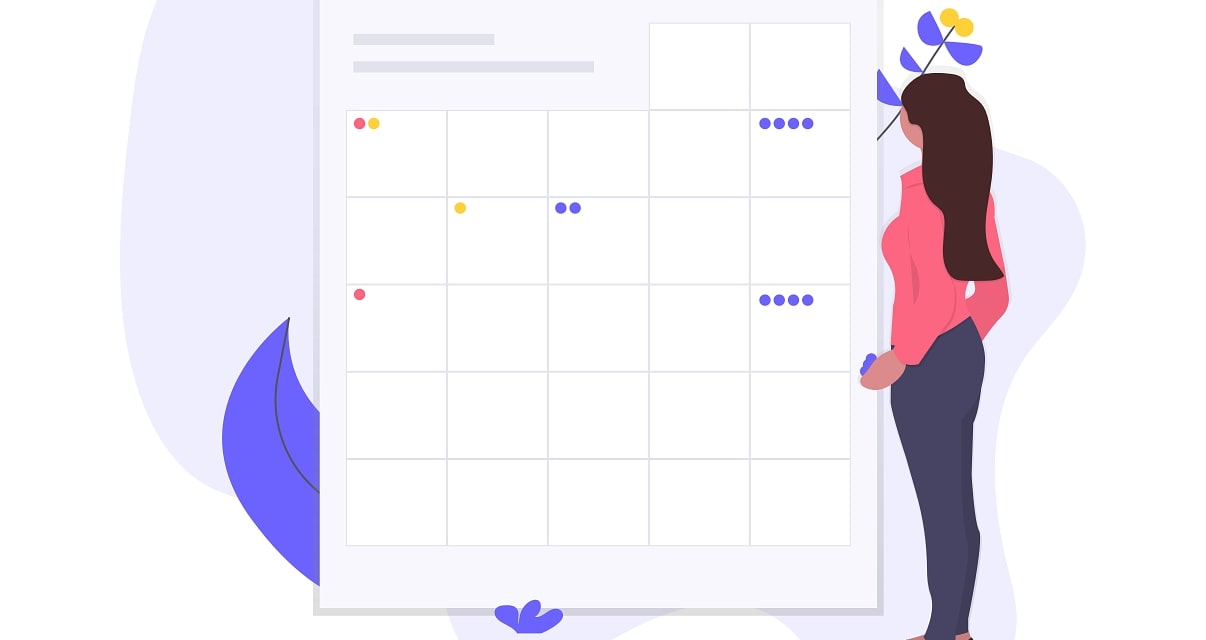How do I make a marketing email calendar? complete manual
How can you make sure that your emails, newsletters, and other communications are sent at the appropriate times? Beginning with an email marketing calendar will simplify a significant aspect of the puzzle, but it necessitates some setup, planning, and preparation.
Once you've planned and visualized when to distribute your newsletters, begin your email campaigns, and schedule your marketing follow-up emails throughout the year, it will be simpler to stick to your plan and carry it out. This implies that the objectives you set for yourself at the start of the year (or sales cycle) will be more feasible and attainable than ever.
In this article, I will share with you how to create an email marketing calendar from scratch. Let’s jump right into the details!
How to create an email marketing calendar

Step 1: Review Your Previous Year
First, review your to-do list from the previous year. Do you have any unfulfilled content objectives or ideas from the previous year? Check to see if they are still applicable, and if they are, start your new list with these suggestions. By doing this, two goals are achieved. You won't need to start from scratch and you won't have any unfinished business or unfulfilled plans.
Step 2: Evaluate Your Past Efforts
Review your earlier content. If you aren't regularly monitoring your results, look at them over the previous six months. Consider posing the following inquiries if you send email newsletters:- - Which email subjects resulted in the highest click-through and open rates?
- - Which of your blog posts received the most traffic?
- - What social media posts received the most engagement – shares, likes, or comments?
List the topics or tactics you want to keep using in the upcoming year. We found that timely content, or content related to an impending holiday like Mother's Day, was the most effective content for our clients. Helpful or educational content, like advertisements promoting cost-saving strategies, has also been a huge success.
Step 3: Identify your priorities and goals
Maybe you want to boost sales by 30%. Maybe you want to get 200 new customers in the coming year. Think about how your content will help you achieve your goals, whatever they may be. Remind yourself of your objectives and priorities whenever you're feeling stuck or upset. The effort was well worth the outcome.
Step 4: Download or create a calendar template
Use ready-made resources that have been provided by other companies if you are having trouble managing your email campaigns. To assist you in creating your calendar, they offer a wide variety of templates. Therefore, you can use any of the top templates that are readily available online if you want to have the best calendar in your asset. You can find a ton of templates with a few Google searches.
Additionally, a number of third-party services offer Excel spreadsheet calendar templates. With this format, you can adjust the template to suit the requirements of your business. So, to ensure that your campaign runs smoothly, pick the appropriate template and plan it carefully.

Step 5: Commit to a schedule
Once you've decided what you want to achieve, decide what schedule you can follow. You must ensure that your schedule is manageable. Feeling like you can't meet your own standards is the most demotivating feeling there is. Decide whether once a week, once every other week, or even once a month is doable for you. Stick to it, whatever the situation may be.
Step 6: Look at Your Calendar
Start organizing your content for specific days on your calendar now that you've decided what you're willing to commit to. You can then choose how many ideas you need to come up with for the month, quarter, or year, depending on how far in advance you want to plan.
Find important dates in your own life and start looking for them.
- - Do you want to commemorate a corporate milestone or a special event?
- - Do you have a seasonal promotion or sale?
- - Is there a calendar of special events?
Note these down in your calendar. Include them if they make sense for your business, such as generic holidays or seasonal themes. For instance, a general contractor might offer suggestions on weatherproofing before winter. A real estate agent might compile the best spring cleaning tips in a newsletter. Make sure you're not just promoting yourself, but also giving useful content marketing the majority of your time.
Step 7: Schedule Everything
Put a publish or send date at the start. Work backward to determine when you should start once you have that date. Give yourself enough time for planning, investigation, and testing. Double-checking images and links, as well as making sure the content appears correctly on all devices and email clients, are all part of the testing process.
Using a blog post as an illustration:
- - Monday: Pick a topic.
- - Wednesday: Write the first draft.
- - Thursday: Make edits and add images.
- - Monday: Build an email template.
- - Tuesday: Send email.
Your shifting schedule will almost certainly require a change to this. Plan your schedule to accommodate any holidays, trips, or lengthy meetings that will keep you away from your desk or out of work. Make sure to create and prepare content for these scenarios in advance.
Step 8: Prepare your content ideas
Count how many topics you still need after you've finished all of your personal, seasonal, and holiday ideas for the upcoming year. Take a few minutes to discuss topics you'd like to write about, questions your clients frequently ask you, or current business trends if you don't already have a running idea log. Continue doing this until you have enough suggestions for your email marketing calendar.
If you don't already have one, create one. Always have backup plans in place in case something doesn't work out. Additionally, you might come across a theme or another timely piece that needs to air at a specific time. Keep a list of these suggestions so you can reference them in newsletters, blog posts, or social media updates.
Step 9: Make Measuring and Adjusting Part of Your Process
Like content, measurement can be planned. You can review your content on a schedule that suits you, whether it's weekly, monthly, quarterly, or another option. Most importantly, make sure you are consistently evaluating your efforts, determining what is working, and making necessary adjustments.
In this manner, you can learn which kinds of content are most effective for you. In the future, you should add more subjects with connected content. Alternately, the opposite might be true, in which case you might need to adjust by getting rid of those kinds of content. Alternately, you might not be publishing frequently enough, which would cause interaction to decrease.
If you schedule the publication of your content on a monthly or quarterly basis, you'll need daily times to plan for upcoming topics. You can write the best content possible, impress your followers, and have a robust email marketing calendar planned out in advance by following these steps, especially regularly reviewing your efforts.
Those are the steps to create an email schedule.
Thank you for reading
Comments
Post a Comment